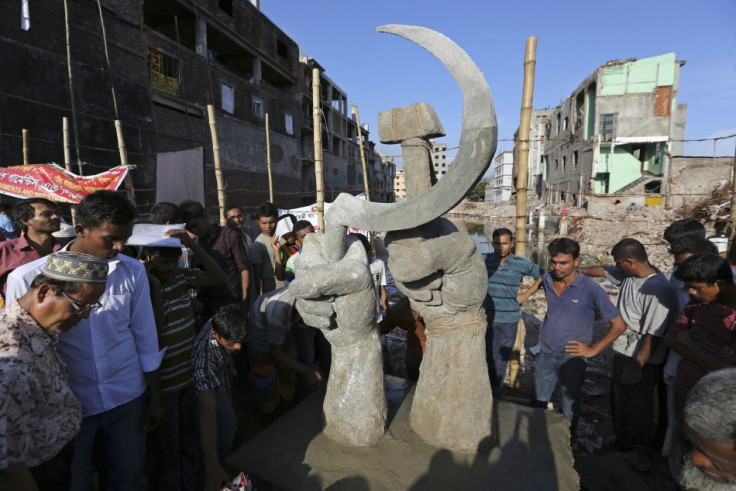Horrors of Rana Plaza Will Continue to Blight Bangladesh Unless Workers Get a Fair Wage

Six months ago the world watched in horror as the disaster at the Rana Plaza building in Bangladesh unfolded. A total of 1132 workers lost their lives and 2000 were injured when the building, which housed five garment factories, collapsed. The reality of poor working conditions in the garment industry was once again under the spotlight.
As efforts to make the industry safe now get under way, most still fail to address one of the underlying causes of such a high death toll - the poverty-level wages earned by Bangladesh's four million garment workers. Yet, the issue of safe workplaces and living wage are closely interlinked. The 3000 workers who entered that building knew that cracks had developed in the walls and that it had been declared unsafe by the authorities, but they simply couldn't afford to refuse to work.
Bangladesh's garment workers are the lowest-paid in the world. Their monthly salary of £24 equates to just 12% of what is estimated to be a living wage. Many Rana Plaza survivors reported that they didn't want to go into the factories, but had been threatened with the loss of one month's pay if they failed to show. These workers were asked to choose between risking their lives in an unsafe building and losing the income they so desperately needed to pay their rent and feed their families. For most this was no choice at all.
In the wake of Rana Plaza a number of "pro-sweatshop" theorists came out to remind us that, however bad the conditions seemed to us, sweatshops were still the best option for workers in the poorest countries and that the industry will, in the end, provide a route out of poverty for these workers and countries.
Yet garment workers are actually poorer now than they were a decade ago; with increases to the minimum wage both irregular and pitiful, real wages are declining in the face of soaring food and energy costs. The garment industry isn't lifting workers out of poverty - it is digging them further in, leaving workers ill and exhausted by the time they reach their thirties. With no possibility to save and little or no pension or social security provisions, older workers are reliant on their children going to take jobs in the very industry that so spectacularly failed to change their lives for the better.
Those who oppose increasing wages to a living wage level argue that doing so would cause employers to go bankrupt and would actually lead to the loss of much-needed jobs. This is a concern - but not an inevitable consequence. Alta Gracia is a factory in the Dominican Republic which pays a living wage to all its workers. Opened on the site of a former Nike supplier it does employ significantly fewer workers than in its previous incarnation. However, the workers employed at the Alta Gracia factory can now afford to eat in local cafés, spend money on building and renovating their homes and buy consumer goods such as cars, fridges or computers. This has led to a growth in small, local business providing these services and in turn the growth of employment opportunities outside of the garment industry.
Others argue that raising wages in one county is impossible, as the industry would simply relocate to another country. One challenge to this is a proposal from the Asia Floor Wage Alliance, a coalition of trade unions and labour rights groups across the main Asian garment producing countries. The AFW has developed a formula for setting a floor wage across Asia, which would guarantee that all workers, wherever they live, would earn enough to cover their basic needs. By calling for the industry across Asia to raise wages to meet minimum basic needs in all countries, they hope to combat the current race to the bottom on wages.
For many in the poorest corners of the globe, work in a garment factory might be better than the alternatives. Yet, surely we can imagine a world with better alternatives? A world where workers, wherever they live, have the ability to refuse work that puts their lives at risk, where working hours are reasonable and where wages are sufficient to cover the basic necessities of life?
The fight for a living wage is a vital part of the push for a safer, more sustainable industry. This is not an impossible dream, it is a necessity if the garment industry is ever to deliver on its promise to lift its millions of workers and their communities out of poverty.
Samantha Maher is International Solidarity and Policy Co-ordinator at Labour Behind the Label, an NGO enabling garment workers worldwide to defend their rights. Click here to find out more about the group and its activities.
© Copyright IBTimes 2025. All rights reserved.





















